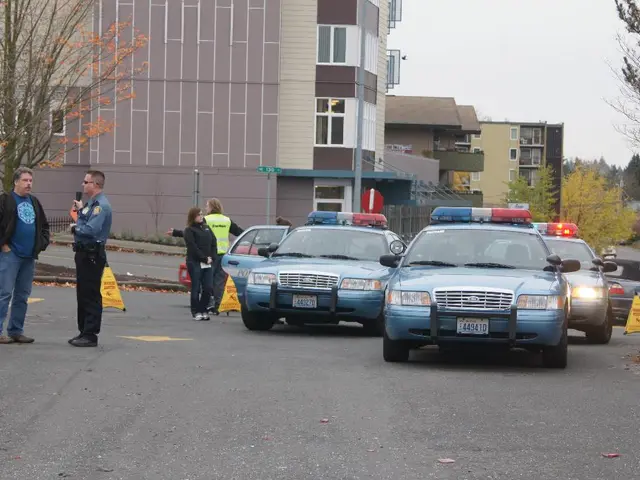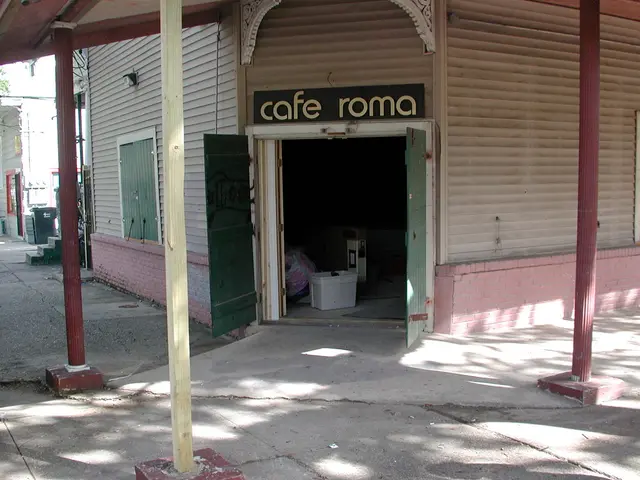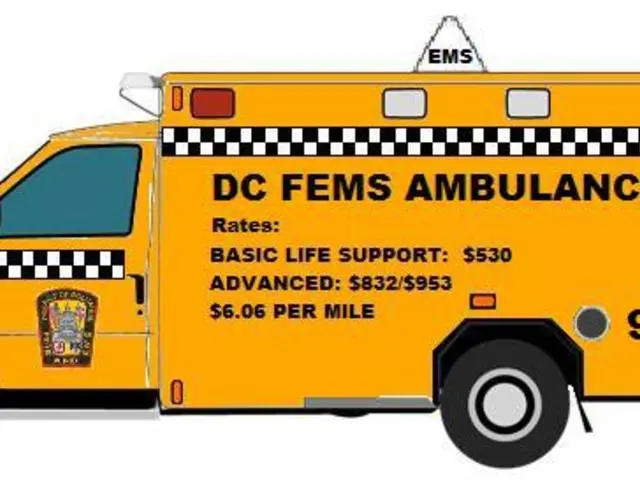A Terrifying Accident at the Dairy Farm in Altmarkkreis Salzwedel
On a dairy farm, a worker sustains severe injuries in an accident. - Dairy mishap results in severe worker injuries
Working on a maintenance shaft at a dairy farm in the Altmarkkreis Salzwedel took a tragic turn for two employees on a Saturday morning. The unfortunate incident took place in Apenburg-Winterfeld, where these workers were busy with pipeline maintenance for manure. As reported by the police, a sudden rush of flue gases filled the shaft, causing one employee to lose consciousness. His 28-year-old coworker tried to save him but also fell unconscious.
Colleagues quickly realizing the emergency situation contacted emergency services. The rescuers arrived and managed to retrieve both the injured employees from the shaft. They are currently under medical treatment in hospitals, and fortunately, they are no longer in critical condition, as the police spokesperson assured.
Proper safety measures in dairy farm maintenance shafts are essential to prevent accidents like this. Here are some standard protocols that should have been followed:
- Personal Protective Equipment (PPE): Workers should always wear appropriate PPE, including gloves, safety boots, eye protection, and hard hats where necessary, to shield against potential hazards.
- Ventilation and Air Quality Monitoring: Maintenance shafts frequently require continuous monitoring for hazardous gases such as methane, ammonia, or hydrogen sulfide using gas detectors. Proper ventilation is crucial to minimize asphyxiation and explosion risks.
- Training and Awareness: Staff must undergo training on confined space entry procedures, safety equipment usage, and emergency response protocols, including knowledge of gas detection tools and rescue procedures.
- Risk Assessment: Before entering a maintenance shaft, a thorough risk assessment should be carried out to spot potential hazards, such as gas leaks, structural issues, and biological contaminants.
- Reporting and Repair Procedures: Workers must report any detected gas leaks or equipment issues immediately to qualified personnel. Unauthorized personnel should refrain from attempting repairs.
In the Altmarkkreis Salzwedel area, it is important that farmers collaborate with local fire departments, occupational safety agencies, and agricultural extension services for up-to-date safety guidance specific to the region. By adhering to these standard safety protocols, accidents like the one at the dairy farm in Altmarkkreis Salzwedel can be prevented in the future.
[1] Occupational Safety and Health Administration (OSHA). (2021, January 15). Confined Spaces in General Industry. Retrieved from https://www.osha.gov/laws-regs/regulations/standardnumber/1910/1910.146
[2] National Fire Protection Association (NFPA). (2020, October 26). Standard 303: Farms. Retrieved from https://www.nfpa.org/Resources-and-Research/Public-Education/Standards-and-Recommended-Practices/NFPA-303-2020-Standard-for-the-Fire-Protection-of-Farms-Retail-Garden-Centers-Landscape-Contractors-Greenhouses-and-Nurseries-and-Fire-Protection-of-Museums-of-Agricultural-History
- In light of the accident at the dairy farm in Altmarkkreis Salzwedel, it is crucial for farmers to implement comprehensive community policies that prioritize workplace wellness and health-and-shelth, providing vocational training on confined space safety, gas detection, and emergency response procedures.
- As reported by the General News, the unfortunate incident in Altmarkkreis Salzwedel underscores the importance of adhering to standards in science, such as Occupational Safety and Health Administration (OSHA) regulations for confined spaces in general industry, as well as the National Fire Protection Association (NFPA) Standard 303 for Farms, to prevent accidents and improve workplace safety.
- In the aftermath of the awful accident, support groups and community organizations should focus on offering vocational training programs for others in the industry to learn from the tragic event, implement safer practices, and reduce the risk of similar accidents occurring in the future.








